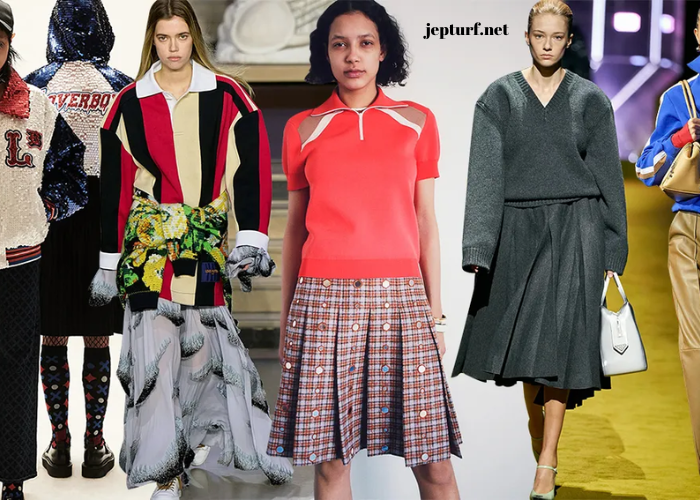In the era of fast fashion and disposable consumerism, a revolution is quietly unfolding. It’s a movement that marries style with substance, and it’s changing the way we view fashion. Welcome to the world of sustainable chic, where elegance is not merely a statement of style but a commitment to responsible living. This article delves into the fascinating realm of sustainable fashion, exploring its origins, principles, and why it’s more than just a trend.
The Birth of Sustainable Chic
Sustainable chic, also known as eco-fashion or ethical fashion, emerged in response to the environmental and ethical crises caused by the fashion industry. In the mid-20th century, the fashion industry transformed from a seasonal, small-scale operation to a relentless cycle of mass production and consumption. Clothing went from being a valued possession to a disposable commodity.
This shift had dire consequences for the environment. The fashion industry became one of the largest contributors to pollution, water waste, and carbon emissions. Additionally, labor exploitation and unsafe working conditions were rampant in garment factories, predominantly in developing countries.
The seeds of sustainable chic were sown in the late 20th century when a few pioneering designers and activists started questioning the status quo. People like Vivienne Westwood, Stella McCartney, and Katharine Hamnett began to advocate for environmentally friendly and ethically produced fashion.
Sustainable Chic Principles:
- Environmental Consciousness: Sustainable chic embraces eco-friendly materials and production processes. It prioritizes the use of organic and sustainable fabrics, minimizes waste, and employs eco-friendly dyeing and printing techniques.
- Ethical Production: Ethical production ensures fair wages, safe working conditions, and respect for workers’ rights. It often involves supporting local artisans and communities, promoting economic empowerment.
- Quality over Quantity: Sustainable fashion is built on the idea of creating timeless pieces that stand the test of time. Instead of producing disposable fashion, it encourages investment in quality garments that last.
- Transparency: Brands committed to sustainable chic are transparent about their supply chains, production processes, and sourcing. They are open about the impact of their products on the environment and society.
- Local Sourcing: Reducing the carbon footprint of fashion is another core principle. Sourcing materials locally reduces transportation-related emissions and supports local economies.
- Second-Hand and Upcycling: Sustainable chic celebrates vintage and second-hand clothing. It encourages consumers to extend the lifespan of garments through repairs and upcycling.
Why Sustainable Chic Matters
Environmental Impact
The fashion industry’s impact on the environment is staggering. It’s the second-largest water polluter globally, and it’s responsible for 10% of global carbon emissions. The excessive use of water, chemicals, and energy in the production of textiles, coupled with the short lifespan of many garments, contributes significantly to this problem.
Sustainable chic strives to minimize these impacts. For example, brands may use organic cotton, which requires less water and fewer chemicals than conventional cotton. Additionally, they might employ closed-loop systems that recycle water and minimize waste in the dyeing and finishing processes.
Ethical Considerations
The dark underbelly of the fashion industry is its exploitation of labor in developing countries. Sweatshops, where workers endure long hours, low wages, and unsafe conditions, are a common blight. The Rana Plaza tragedy in 2013, where a garment factory in Bangladesh collapsed, killing over 1,100 people, was a wake-up call to the ethical concerns in fashion.
Sustainable chic is committed to ensuring fair wages and safe working conditions. Brands that adhere to ethical practices support workers’ rights and promote dignity and respect throughout the supply chain.
Consumer Empowerment
Sustainable chic empowers consumers to make conscious choices. It encourages buyers to consider the impact of their purchases and question the status quo. By choosing sustainable fashion, consumers become part of a movement that challenges the throwaway culture and fosters responsible consumption.
Innovation and Creativity
The constraints of sustainable fashion can be a breeding ground for creativity and innovation. Designers are forced to think outside the box, using unconventional materials and techniques. This not only reduces environmental impact but also results in unique and inspiring fashion pieces.
Economic Growth and Community Development
Local sourcing and support for artisans and communities are central to sustainable chic. By investing in local economies and traditional craftsmanship, sustainable fashion can be a catalyst for economic growth and community development.
Sustainable Chic in Practice
Sustainable chic isn’t limited to a particular style or aesthetic; it’s a mindset that can be incorporated into various fashion genres. Here are some examples of how it’s being put into practice:
Sustainable Materials
One of the foundational pillars of sustainable chic is the use of eco-friendly materials. Designers are increasingly turning to organic cotton, hemp, Tencel, and recycled fabrics. These materials not only have a lower environmental footprint but also often result in high-quality, comfortable clothing.
For instance, Patagonia, an outdoor clothing company, is renowned for using recycled materials in their products. They encourage customers to return worn-out items for repair, and when that’s no longer possible, they recycle the materials.
Slow Fashion
The slow fashion movement is an integral part of sustainable chic. It promotes buying less but choosing better. Slow fashion brands prioritize craftsmanship and quality over quantity. This approach extends the lifespan of clothing and reduces the need for constant replacements.
Companies like Eileen Fisher exemplify this philosophy. They create timeless, versatile pieces that can be mixed and matched, reducing the need for an extensive wardrobe.
Upcycling and Repurposing
Upcycling is another creative aspect of sustainable chic. It involves taking old or discarded garments and turning them into something new and fashionable. This practice not only reduces waste but also adds a unique twist to fashion.
Brands like RÆBURN specialize in upcycling military surplus materials to create stylish, sustainable clothing.
Ethical Production
Many sustainable chic brands are committed to ethical production practices. For example, Everlane is known for its transparent pricing and commitment to fair wages and safe working conditions for all workers in its supply chain.
Local Sourcing and Artisanal Craftsmanship
Sourcing materials and labor locally is a strategy employed by sustainable chic brands to reduce their carbon footprint and support local communities. This approach often results in unique, handcrafted pieces.
Indigenous, a brand that collaborates with indigenous artisans from around the world, is an excellent example of this. They blend traditional craftsmanship with contemporary design, creating distinctive, culturally rich fashion.
The Challenges of Sustainable Chic
While sustainable chic is a powerful movement, it’s not without its challenges:
Accessibility and Price
Sustainable fashion often comes with a higher price tag, which can make it less accessible to a broader audience. Quality materials, ethical production, and transparency in the supply chain all contribute to the cost. However, some argue that the investment in quality pieces can pay off in the long run.
Lack of Regulation
The fashion industry lacks comprehensive regulations to govern sustainability and ethical practices. While some certifications like Fair Trade and GOTS (Global Organic Textile Standard) exist, they are not universally adopted.







